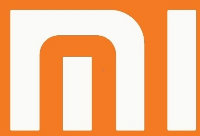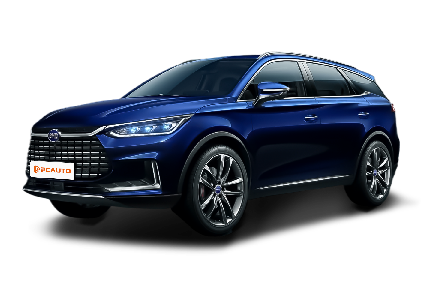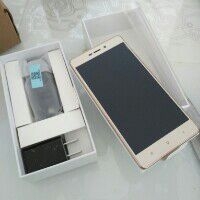Q
How fast is BYD TANG?
The BYD TANG is an electric SUV with outstanding performance. Its acceleration time from 0 to 100 km/h is only about 4.6 seconds, and it can reach a top speed of 180 km/h, demonstrating strong power performance. This vehicle is equipped with BYD's advanced electric drive technology. The dual-motor four-wheel-drive system offers excellent acceleration performance and handling stability, which is very suitable for the needs of Malaysian consumers for high-performance electric vehicles.
In addition to its excellent acceleration ability, the BYD TANG also has a spacious interior and a wealth of intelligent technology configurations, such as the DiPilot intelligent driving assistance system and a 15.6-inch rotating central control screen, bringing a more convenient experience for drivers.
In Malaysia, the popularity of electric vehicles is gradually increasing. With its high performance and long cruising range (over 500 kilometers under the NEDC standard), the BYD TANG has become one of the cost - effective choices for local consumers. Moreover, the low maintenance cost and environmental - friendly features of electric vehicles make it more attractive in the Malaysian market. Especially for users who focus on sustainable transportation, the BYD TANG is undoubtedly an option worthy of attention.
Special Disclaimer: This content is published by users and does not represent the views or position of PCauto.
Related Q&A
Q
How fast can the BYD Tang charge?
As a high-performance electric SUV, the BYD Tang excels in charging speed. It supports DC fast charging of up to 110kW. It only takes about 30 minutes to charge the battery from 30% to 80%, which meets the needs of Malaysian users for long - distance travel or quick energy replenishment. When using a home AC charging pile (7kW), it takes about 8 - 10 hours to fully charge the battery, which is suitable for overnight charging.
For Malaysian consumers, charging efficiency is one of the key factors in the practicality of electric vehicles. The fast - charging ability of the BYD Tang is particularly practical against the backdrop of the gradual popularization of local public charging facilities. In addition, the charging speed of electric vehicles is also affected by factors such as battery temperature, charging pile power, and grid stability. It is recommended that users give priority to charging stations with high compatibility for the best experience.
With the Malaysian government's promotion of green travel and the continuous improvement of electric vehicle infrastructure, models like the BYD Tang with high charging efficiency will become a more convenient travel option.
Q
How long is the BYD TANG 7 seater?
The overall length of the 7-seater version of the BYD TANG is 4,870 millimeters. It's a mid - to large - sized SUV with a spacious body, making it ideal for family use. It's especially practical in Malaysia for large - sized families or situations where you often need to carry relatives and friends. This vehicle not only offers a comfortable 7 - seat layout but also boasts excellent range and advanced intelligent technology features. Take the DiPilot intelligent driving assistance system for example, which can enhance driving safety and convenience.
As a new - energy vehicle, the BYD TANG has also caught the attention in the Malaysian market. Its all - electric or plug - in hybrid versions can meet the diverse needs of different users and align with the global trend of energy conservation and emission reduction. For Malaysian consumers, choosing the BYD TANG means not only enjoying a large space and high - tech features but also experiencing the low operating costs of an electric vehicle. Additionally, with the local government's policy support for new - energy vehicles, such as tax exemptions, its appeal is further enhanced.
Q
How big is the BYD TANG compared to Model Y?
There are obvious differences in size between the BYD Tang and the Model Y. The 2025 BYD Tang has a length of 4,870 mm, a width of 1,950 mm, a height of 1,725 mm, and a wheelbase of 2,820 mm. Some versions of the Tang L even have dimensions of 5,040/1,996/1,760 mm and a wheelbase of 2,950 mm. In contrast, the 2025 Model Y has a length of 4,797 mm, a width of 1,920 mm, a height of 1,624 mm, and a wheelbase of 2,890 mm. It's clear that the BYD Tang surpasses the Model Y in length, width, and height, providing passengers with more spacious head and shoulder room. However, the Model Y has a longer wheelbase, which theoretically gives it an advantage in rear - seat legroom. Additionally, the Tang has a 5 - door, 7 - seat layout, making it suitable for large - family outings or carrying multiple passengers. The Model Y is a 5 - door, 5 - seat vehicle, more suitable for small families or daily commuting.
Q
How much horsepower does a BYD Tang have?
The horsepower varies among different models of the BYD Tang. In the DM - i series, the traditional combustion - powered version has a maximum horsepower of 160. The plug - in hybrid version can reach nearly 500 horsepower under combined driving conditions, and its peak performance is close to or exceeds the level where the official claims it can accelerate from 0 to 100 km/h in about six seconds. Some versions are equipped with a dual - motor four - wheel drive system, with a maximum combined performance of 517 horsepower. The Tang EV model uses a drive motor with a maximum power of 180kW (245 horsepower). Additionally, the maximum power of the Tang DM - p system can reach 452 kilowatts, which is over 600 horsepower after conversion. In short, the diverse power configurations can meet the power requirements of different consumers.
Q
What is the range of BYD TANG?
As a plug - in hybrid SUV, the BYD TANG has an electric range of approximately 81 kilometers (NEDC standard) in the Malaysian market, and its combined range can exceed 800 kilometers, which is suitable for daily commuting and long - distance driving needs. This model is equipped with BYD's advanced DM - i super hybrid technology. By combining the efficient engine and the electric motor to work in tandem, it not only has excellent fuel consumption performance but also provides a smooth driving experience.
For Malaysian users, the TANG's large - space design (7 seats as standard) and intelligent features (such as the DiLink in - car system) can well meet the needs of family travel. Meanwhile, its battery pack has passed strict safety tests and is suitable for use in the tropical climate.
It's worth noting that the Malaysian government has a policy of exempting import duties on electric vehicles, and buyers of PHEV models can also enjoy road tax incentives. These factors make the TANG more competitive in the local market.
In terms of charging convenience, the main cities in Malaysia are expanding their charging facilities, and the hybrid system can also eliminate range anxiety. It is recommended to check the latest prices and dealer test - drive services on the BYD Malaysia official website before purchasing a car.
Q
Does BYD TANG Support Apple CarPlay?
The BYD Tang supports Apple CarPlay. With this feature, drivers can use many functions on their iPhones in the car's central control system, such as playing music, navigating, making calls, reading text messages, and even watching online videos, which enhances driving convenience and safety. The central control display of the BYD Tang is equipped with the DiLink system, which is feature-rich, responsive, and easy to operate. It can be connected to the mobile phone via Bluetooth or USB mode. When using Bluetooth connection, click the Bluetooth icon on the screen to enter the settings. After turning on the Bluetooth function, you can set up automatic connection and other options. When using USB connection, turn on the USB function of your phone and connect it to the USB port in the car with a data cable, and the central display can read the media files in the phone. In addition, the central display also supports wireless Internet access. You can purchase system traffic or connect to the mobile phone's hotspot to get online.
Q
What type of charger is a BYD TANG?
The BYD Tang can use a variety of chargers. In a home setting, you can use a regular 220 - 240V, 50Hz socket that meets local standards and pair it with the charging cable provided with the vehicle for slow charging. In Malaysia, the large three - pronged square - shaped British standard sockets are used, which can meet the basic charging needs, but the charging speed is relatively slow. There are also wall - mounted home chargers available. They usually come in different power specifications, such as 7kW, and can speed up the charging process. It's quite convenient to install them in a private parking space or garage. When it comes to public charging facilities, there are DC fast - charging stations to choose from, which can replenish a large amount of power for the vehicle in a short time, meeting the needs of emergency trips. In addition, there are also some compatible portable charging guns on the market, which you can choose to use according to the actual situation. All these chargers aim to provide users with diverse charging methods to meet the charging needs of the BYD Tang in different scenarios.
Q
Is the BYD TANG 4x4?
The BYD Tang is a plug-in hybrid SUV. It does offer a four-wheel drive (4x4) version, which is equipped with BYD's advanced DM-p super hybrid technology. The all-time four-wheel drive capability is achieved through the coordinated operation of the front and rear dual motors and the engine, making it suitable for the rainy and humid road conditions in Malaysia or for light off-road needs.
This model has a pure-electric range of over 100 kilometers, balancing environmental friendliness and power performance. The four-wheel drive system can intelligently distribute torque to enhance stability on slippery roads. For Malaysian consumers, the four-wheel drive version of the BYD Tang is a practical choice for family outings or dealing with the tropical climate. Meanwhile, its hybrid features also align with the local trend of gradually promoting new energy vehicles.
It's worth noting that when choosing a four-wheel drive model, you need to comprehensively consider fuel consumption and battery maintenance costs. However, BYD's charging network layout in the Southeast Asian market is gradually improving, and the local after-sales system is relatively mature, providing convenience for car owners. If you have a sufficient budget and often encounter complex road conditions, the four-wheel drive version is a good investment. Otherwise, the two-wheel drive version is more cost-effective for urban commuting.
Q
How long does it take to charge a BYD TANG?
The charging time of the BYD TANG depends on the charging method used. With a common household AC charging pile (7kW) in Malaysia, it takes about 8 to 10 hours to fully charge the vehicle, which is suitable for overnight charging or when the car is parked for a long time. When using a public DC fast - charging station (such as 50kW or higher power), it can charge the battery from 30% to 80% in 30 to 40 minutes, greatly reducing the waiting time.
As a plug - in hybrid model, the BYD TANG has its battery capacity and charging efficiency optimized to meet the needs of both daily commuting and long - distance travel. For Malaysian users, it is recommended to choose an appropriate charging method based on daily driving mileage and the convenience of charging facilities. If the vehicle is mainly used for short - distance trips in the city, home slow charging is sufficient. However, in cases of frequent inter - state travel or emergencies, fast charging should be the priority.
In addition, due to the hot climate in Malaysia, it is advisable to avoid charging during high - temperature periods to extend the battery life. Meanwhile, regularly check the status of the charging equipment to ensure safety. As the charging infrastructure in Malaysia gradually improves, the charging experience for electric vehicle owners will become more convenient and efficient.
Q
What is the real consumption of BYD TANG?
As a plug - in hybrid SUV, the actual fuel consumption of the BYD TANG varies with factors such as driving habits, road conditions, and battery charge. Official data shows that in hybrid mode, the combined fuel consumption is about 1.8 - 2.3L per 100km. In pure - electric mode, the driving range can reach 100 - 120 kilometers, making it suitable for daily short - distance commutes. For users in Malaysia, this low - fuel - consumption performance is especially suitable for congested urban roads, effectively reducing the cost of vehicle use.
If you're taking a long - distance trip, the hybrid system will automatically switch to fuel mode, and the fuel consumption will be close to that of a traditional SUV, approximately 7 - 9L per 100km. It is recommended that car owners make full use of charging facilities to maximize the electric driving range and thus save on fuel costs. At the same time, regular maintenance of the battery and power system can also ensure optimal energy - consumption performance.
In addition, the hot climate in Malaysia may have a slight impact on the battery's driving range. Parking in a shaded area as much as possible helps maintain battery efficiency.
Popular Cars
Model Year
Car Compare
Car Photo
Latest Q&A
Q
Does the 2019 Golf GTI have a timing belt or chain?
The 2019 Golf GTI uses a timing chain instead of a timing belt—a design that offers better durability and lower maintenance costs. Typically, a chain lasts as long as the engine itself and rarely needs replacement, whereas a belt requires inspection or replacement every 60,000 to 100,000 km. If neglected, a worn belt can snap and cause severe engine damage.
VW’s EA888 engine family has long relied on chain-driven systems, which are relatively quiet and highly reliable. That said, it’s crucial to periodically check the tensioner’s condition. Some earlier models experienced timing issues due to tensioner design flaws, but this was addressed in the 2019 version.
For performance enthusiasts, a chain system handles high-revving stress better, making it a common choice for hot hatches like the GTI. For daily driving, just stick to VW 50400/50700-spec oil as recommended in the manual—proper lubrication keeps the chain system healthy long-term.
One heads-up: If you hear noticeable metallic rattling near the front of the engine, have the guides or tensioner inspected ASAP. Unlike the telltale belt squeal before failure, this noise is a classic sign of chain-related wear.
Q
What is the recall on the 2019 GTI?
The 2019 Volkswagen Golf GTI was subject to a safety recall addressing two potential issues. First, the fuel pump control unit software could malfunction, potentially causing engine stalling in rare cases. Second, some vehicles might have rear suspension stabilizer link bolts that weren't tightened to specification, posing a loosening risk. Owners can visit authorized dealers for free software updates or bolt retightening.
These proactive recalls demonstrate Volkswagen's commitment to safety. Dealers often handle outstanding recall items during routine maintenance.
For performance-oriented models like the GTI, it's wise to go beyond recall checks. Pay close attention to the turbo system, DSG transmission fluid, and brake wear—these components endure more stress during spirited driving. If warning lights appear or you notice unusual noises, get a professional inspection promptly. Keeping the car in top shape ensures you can fully enjoy its dynamic capabilities.
Q
Does the 2019 GTI require premium gas?
The 2019 GTI does recommend using high-octane fuel (typically RON 95 or above). Its 2.0L turbocharged engine has a relatively high compression ratio, and premium gas ensures optimal performance while reducing knock risk. It also helps maintain engine cleanliness and long-term reliability.
While the car may tolerate lower-octane fuel (like RON 92), you’d see slightly reduced power output and fuel efficiency. Over time, it could also affect engine longevity. Turbocharged engines are particularly sensitive to octane ratings since turbos generate higher heat and pressure—high-octane fuel handles these conditions better.
Mixing different fuel grades occasionally won’t hurt, but sticking to the manufacturer’s recommendation is ideal. Also, periodic fuel additive treatments can help clean carbon buildup, especially for direct-injection engines.
One more thing: even with the same octane rating, fuel additive packages vary by brand. So, picking a reputable gas station matters too.
Q
How long will a 2019 GTI last?
The lifespan of a 2019 GTI largely depends on maintenance and driving habits. With regular oil changes, transmission fluid replacements, and avoiding aggressive driving, it can easily clock over 200,000 kilometers—or even more. Its 2.0T engine and DSG gearbox are proven combos, and as long as you stick to the factory service schedule, mechanical reliability won’t be an issue.
Just keep in mind: turbocharged engines demand extra care. Always use the right spec full-synthetic oil and monitor the cooling system. Climate plays a role too—hot, humid conditions mean paying extra attention to rubber seals and electronics. Every 50,000 km, have the timing chain and high-pressure fuel pump inspected (key items for turbos).
Driving style matters. Don’t redline it constantly, and let the engine warm up properly after cold starts. Rustproofing helps long-term durability, so regular underbody washes are smart. Nail these details, and this car’s built to last.
Q
How fast is the 2019 GTI?
The 2019 GTI truly delivers when it comes to performance. Under the hood lies a punchy 2.0-liter turbocharged four-cylinder, churning out 228 horsepower and 350 Nm of torque. Whether you opt for the engaging 6-speed manual or the lightning-fast 7-speed DSG, this hot hatch rockets from 0-100 km/h in just 6.3 seconds, with an electronically limited top speed of 250 km/h.
What really sets the GTI apart is its razor-sharp handling. The sport-tuned suspension and electronic differential lock work together to deliver precise steering and rock-solid cornering stability. It’s the perfect blend of everyday practicality and proper driver’s car thrills—a well-rounded hot hatch in every sense.
For enthusiasts, the GTI’s tuning potential is massive. Many owners go for ECU remaps or intake/exhaust upgrades to squeeze out even more power. Just remember to keep things street-legal—safety and compliance should always come first. Around here, these pocket rockets have a solid following, and it’s easy to see why.
View MoreRelated News

Leapmotor B10 VS BYD Atto 3, a showdown between two automakers adept at price wars
WilliamNov 27, 2025

On one side is Dolphin, on the other side is Firefly, which is like the iPhone camera, which one should I choose?
JamesNov 26, 2025

Honda City Hatchback vs. BYD Dolphin, how to choose for short-distance commuting?
Kevin WongNov 5, 2025

BYD Sealion 7 is not only cheaper than Tesla Model Y, what other differences do they have?
Kevin WongOct 29, 2025

iCaur 03 vs. BYD Atto 3, how will iCaur 03 challenge the globally best-selling Atto 3?
Kevin WongOct 16, 2025
View More


















Pros
Cons